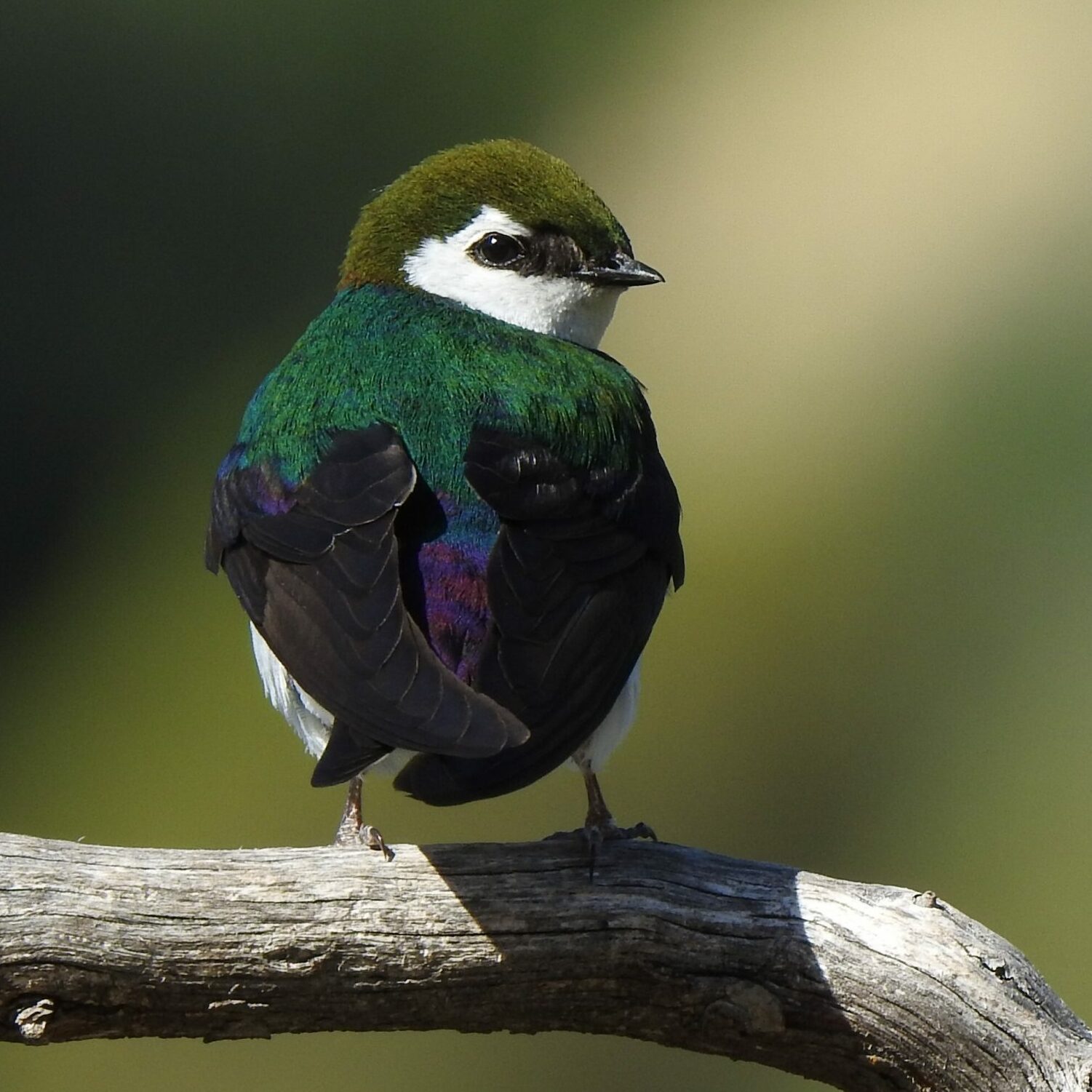The violet-green swallow is a shiny green flier that swoops and soars in the West. Discover where to find them, what they eat and more.

How to Identify a Violet-Green Swallow

On This Page
What Does a Violet-Green Swallow Look Like?

Like other members of the swallow family, the violet-green swallow’s plumage is shiny and striking. Males are green with brownish-purple wings and a purple rump, and they have a white belly and a white face. Green feathers cover the top of their head.
Females are similarly colored, but “muddier.” While they have some green feathers, their bellies are streaked with gray-brown and their heads are almost entirely brown as well.
Juveniles follow the same plumage pattern as the males, but where males would have green or purple feathers, they have dark brown.
Do swallow sightings have special meaning?
Nest and Eggs

Similar to the tree swallow, violet-green swallows are cavity nesters. They can nest in cliffs, but they’ll also use dead trees, old woodpecker holes or nest boxes like the ones bluebirds use. They will sometimes nest in groups of up to 25 pairs.
These swallows build cup-style nests that can take up to 20 days to complete. A typical clutch consists of four to six white eggs, and parents will raise one, or occasionally two, broods per season. The mother bird does most of the feeding of the baby swallows, but the father helps, too.
Learn more about swallow nesting habits.
Violet-Green Swallow Range

Birders in the west who live near water or wooded areas have the best chance of spotting one of these glimmering green birds.
During their breeding season, they’re commonly found almost everywhere west of the Dakotas. Their range stretches up from Washington into Canada and even into Alaska.
Discover fascinating facts about barn swallows.
What Do Violet-Green Swallows Eat?

Similarly to other swallows, this species eats bugs — and plenty of them. They swoop and soar through the air to snack on flies, beetles, wasps and other flying insects.
While you might not spot these birds at feeders, if you have a buggy backyard, you might be able to bring them in. Grow native plants that bees and beneficial insects love to attract more bug-catching swallows.
Learn what a cliff swallow looks like.
Call and Sounds
Bird sounds courtesy of the Cornell Lab of Ornithology
Though classified as songbirds, they don’t have a notable song. Listen for their chirps early in the day and short calls to other swallows.
Next, discover how to identify purple martins — and find out how to attract them with a purple martin birdhouse.
Sources
- All About Birds – Violet-green swallow
- National Audubon Society – Violet-green swallow




















